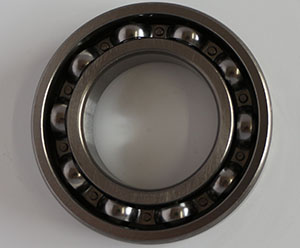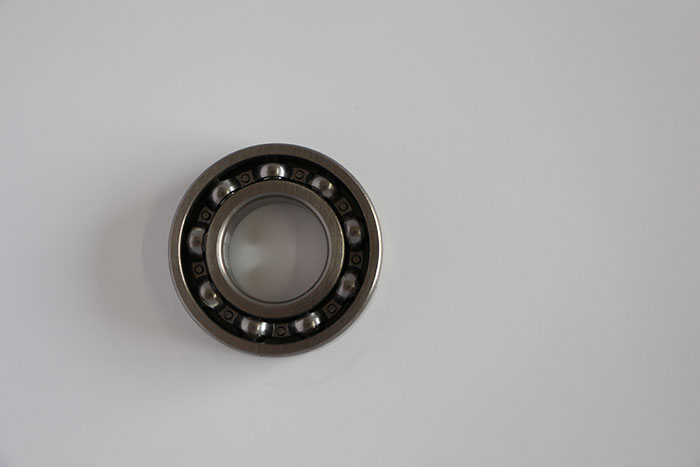
Single Row Deep Groove Ball Bearings, commonly known as ball bearings, are integral components in various mechanical applications. Understanding their anatomy is crucial for engineers and enthusiasts alike.
Inner and Outer Rings
At the heart of these bearings are the inner and outer rings. The inner ring is fixed onto the shaft, while the outer ring remains stationary. This design allows for smooth rotational motion.
Cage Design
The cage, often made of steel or synthetic materials, holds the ball bearings in place, ensuring they maintain the correct spacing and prevent friction between them.
Ball Types and Arrangements
Diving deeper, the type and arrangement of the balls play a significant role. Different bearing designs employ various ball configurations to optimize load capacity and reduce friction.
Applications of Single Row Deep Groove Ball Bearings in Automotive Engineering
Overview of Automotive Use
In the realm of automotive engineering, single row deep groove ball bearings find widespread use. They are employed in wheel hubs, transmissions, and engines, providing stability and reducing friction in critical components.
Benefits in Automotive Applications
The simplicity of design and the ability to handle both radial and axial loads make these bearings ideal for the demanding conditions within a vehicle. Their compact size also contributes to space efficiency in automotive assemblies.
Comparative Analysis of Single Row vs. Double Row Deep Groove Ball Bearings
Key Differences Between the Two
While single row and double row bearings share similarities, their differences are crucial. Single row bearings are space-saving and more suitable for lighter loads, whereas double row bearings excel in heavier load applications.
Advantages and Disadvantages
Exploring the advantages and disadvantages of each type helps engineers make informed decisions. Single row bearings offer simplicity and cost-effectiveness, while double row bearings provide higher load-carrying capacities.
Lubrication Strategies for Single Row Deep Groove Ball Bearings
Importance of Lubrication
Effective lubrication is paramount for the optimal performance and longevity of single row deep groove ball bearings. It reduces friction, dissipates heat, and prevents premature wear.
Types of Lubricants and Their Impact
Different applications may require specific lubricants. Understanding the characteristics of greases and oils aids in selecting the most suitable lubrication for the operating conditions, ensuring a smooth and reliable bearing performance.
Factors Influencing the Selection of Single Row Deep Groove Ball Bearings
Load Capacity
Determining the load capacity is a critical step in selecting the right bearing for an application. It involves considering both radial and axial loads and choosing a bearing that can handle the expected forces.
Speed Ratings
The rotational speed at which a bearing can operate without excessive heat generation is crucial. Matching the bearing’s speed rating to the application’s requirements ensures optimal performance and durability.
Temperature Considerations
Extreme temperatures can impact bearing performance. Selecting a bearing with the appropriate temperature range ensures reliable operation in diverse environmental conditions.
The Role of Single Row Deep Groove Ball Bearings in Electric Motors
Significance in Motor Functionality
Electric motors rely on bearings to facilitate smooth rotation. Single row deep groove ball bearings play a pivotal role in supporting the motor shaft, reducing friction, and enhancing overall efficiency.
Common Applications
Whether in household appliances or industrial machinery, electric motors benefit from the compact design and reliable performance of single row bearings. They contribute to the seamless operation of various motor-driven systems.
Common Maintenance Challenges and Solutions for Single Row Deep Groove Ball Bearings
Identifying Common Issues
Despite their robust design, single row deep groove ball bearings can face challenges such as contamination, misalignment, or inadequate lubrication. Identifying these issues early is key to maintaining optimal performance.
Effective Maintenance Practices
Regular inspection, proper lubrication, and addressing issues promptly are fundamental to the maintenance of these bearings. Implementing a proactive maintenance schedule ensures extended bearing life and minimizes downtime.
Innovations in Single Row Deep Groove Ball Bearing Technology
Recent Advancements
The field of bearing technology is dynamic, with ongoing innovations. Recent advancements include improved materials, coatings, and sealing technologies, enhancing the performance and durability of single row deep groove ball bearings.
Impact on Performance and Longevity
Engineers and manufacturers benefit from these innovations as they translate into bearings with extended service life, reduced maintenance requirements, and improved performance in challenging operating conditions.
Environmental Impact: Sustainable Practices in Single Row Deep Groove Ball Bearing Production
Overview of Environmental Concerns
The manufacturing process of bearings can have environmental implications. Addressing these concerns involves adopting sustainable practices to minimize the ecological footprint of single row deep groove ball bearings.
Sustainable Manufacturing Practices
From material sourcing to production processes, manufacturers are exploring eco-friendly alternatives. Sustainable practices, such as recycling and reducing energy consumption, contribute to the overall effort to create environmentally responsible bearings.
Conclusion
In conclusion, understanding the intricacies of single row deep groove ball bearings is vital for engineers and industries relying on these components. From automotive applications to electric motors, their versatility and performance make them indispensable. Embracing innovations and sustainable practices ensures a greener and more efficient future for bearing technology.
FAQs
How often should single row deep groove ball bearings be lubricated?
The frequency of lubrication depends on the operating conditions, but a general recommendation is regular intervals or when signs of insufficient lubrication appear.
Can single row bearings handle both radial and axial loads simultaneously?
Yes, single row bearings are designed to handle both radial and axial loads, making them versatile for various applications.
What are the common signs of bearing wear and tear?
Unusual noise, increased friction, and vibration are common indicators of bearing wear and should prompt a thorough inspection.
Are there sustainable alternatives in the production of ball bearings?
Yes, manufacturers are increasingly adopting sustainable practices, including the use of recycled materials and energy-efficient production methods.
Are there specific considerations for bearing selection in high-temperature environments?
Yes, in high-temperature applications, it’s essential to choose bearings with materials and lubricants designed to withstand elevated temperatures, ensuring reliable performance.
Can single row deep groove ball bearings be used in corrosive environments?
While standard bearings may face challenges in corrosive environments, there are corrosion-resistant options available, often made with stainless steel or special coatings.
What role do seals and shields play in protecting single row bearings?
Seals and shields are crucial for preventing contamination and retaining lubrication. They act as protective barriers, enhancing the durability and lifespan of single row deep groove ball bearings.
How does misalignment impact the performance of single row bearings?
Excessive misalignment can lead to increased wear and reduced efficiency. It’s important to install bearings properly and address any misalignment issues promptly to ensure optimal performance.
Can single row bearings be customized for specific industrial applications?
Yes, many manufacturers offer customization options to tailor bearings to the unique requirements of different industries, providing optimal performance and longevity.


